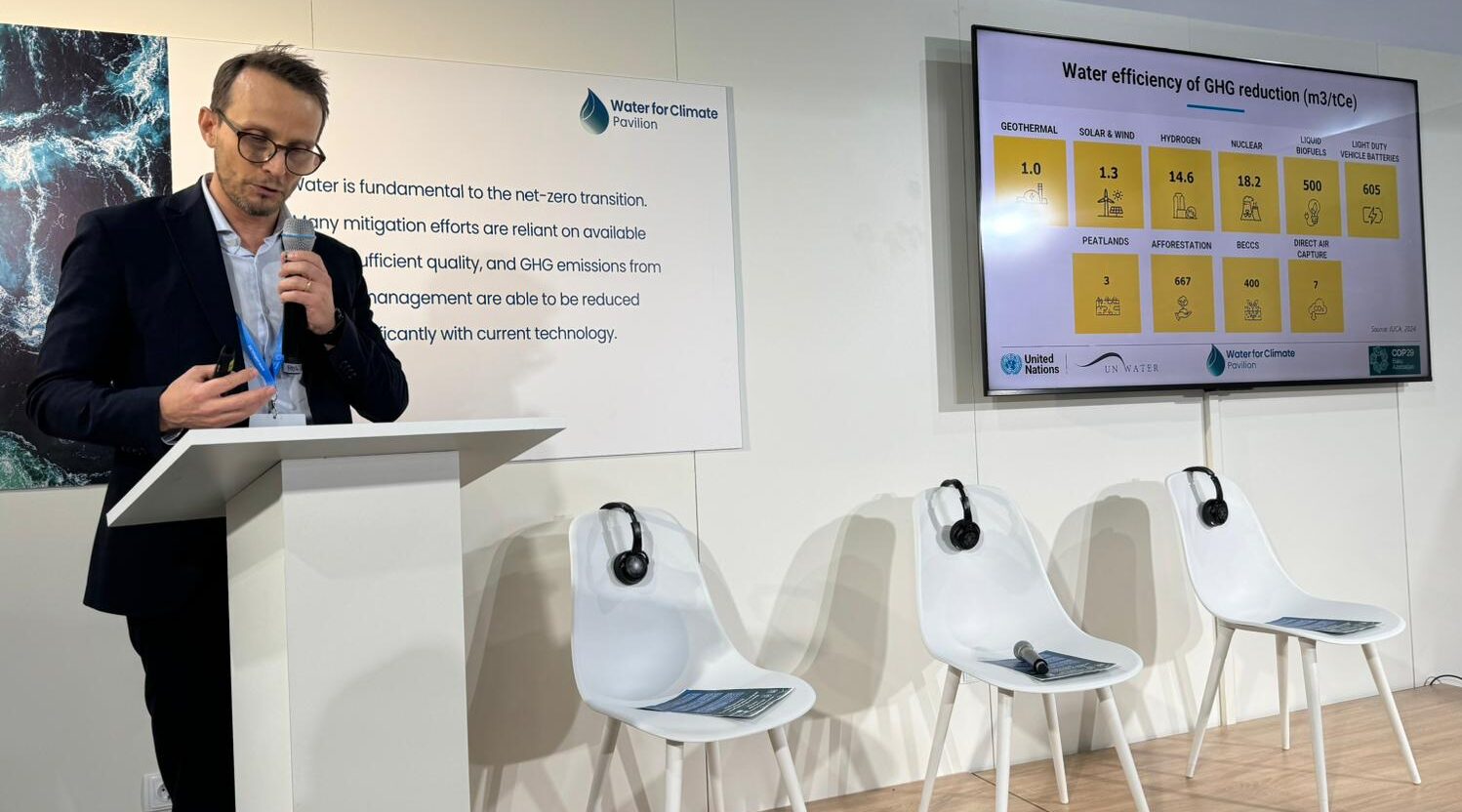 Nicolas Franke, World Meteorological Organization
Nicolas Franke, World Meteorological Organization
Negotiations have stalled at the COP29 climate talks in Baku, as countries grapple over how to reduce greenhouse gas emissions. So far, proposals to phase out coal, curb deforestation, and set concrete methane targets have met fierce resistance, threatening progress on mitigation—the cornerstone of efforts to limit global warming to 1.5 or 2 degrees Celsius.
Under the Mitigation Work Programme, a coalition of developed nations, small island states, and least-developed countries are urging governments to halt new coal projects and ramp up renewable energy. But opposition from several major emitters has stymied progress, leaving the future of these measures uncertain.
With the clock ticking and the impacts of climate change intensifying, COP29 President Mukhtar Babayev has challenged negotiators not to stay “silent on mitigation.”
The stakes are particularly high as countries approach the 2025 deadline for updating their Nationally Determined Contributions (NDCs) — the climate action plans that each country submits under the Paris Agreement. These updated targets will cover emissions reductions through 2035, setting the stage for the next decade of global climate action. But as the negotiations drag on, experts at the COP29 Water for Climate Pavilion warn that failing to address critical issues like water resource management could undermine the effectiveness of these commitments.
“Can we meet the NDCs without taking into account water properly? No, obviously,” said Mark Howells, Program Director at Climate Compatible Growth. Climate mitigation strategies, including renewable energy projects and nature-based carbon removal solutions, are all intricately linked to water resources, and any failure to account for this could derail their success.
Limiting global warming to 1.5 or 2 degrees Celsius requires massive reductions in greenhouse gas emissions. But an often-overlooked challenge lies at the intersection of climate mitigation and water — a nexus essential to achieving climate goals yet fraught with trade-offs.
During a panel session at the Water for Climate Pavilion, Ingrid Timboe, Deputy Executive Director at AGWA, emphasized the stakes: “How we manage water is really make or break for net zero and a just energy transition.”
As nations shift from fossil fuels to renewable energy sources, water becomes both a solution and a constraint. Phasing out traditional coal-fired power plants will conserve vast amounts of water for cooling, according to a newly released brief from UN Water. This shift could free up water resources in regions heavily reliant on thermal power. However, the rise of clean energy technologies brings its own challenges, as processes like solar panel manufacturing, biofuel production, and green hydrogen generation all require substantial water inputs.
Water and sanitation systems also present a complex paradox: they can reduce emissions but are also emitters. The International Universities Climate Alliance (IUCA) estimates that one billion liters of water used for green hydrogen production could save 68.4 gigatons of CO2 emissions, while the same amount directed toward peatland restoration could sequester 18.5 gigatons.
Yet, water systems themselves are not without their environmental costs. “We know that emissions from wastewater are about the same as from aviation—roughly 2%,” said Ingrid Timboe, Deputy Executive Director at AGWA. “Additionally, 4% of global electricity use is required to abstract, store, treat, and distribute water for industrial and domestic purposes.”
Addressing energy-intensive water cycles
This dual challenge is evident in regions without supplies of freshwater, such as the Canary Islands. According to Deputy Minister Julietta Schallenberg, while the islands are highly dependent on desalination, the process is energy-intensive. “Our water cycle — from desalination to pumping and wastewater treatment — accounts for 17.5% of overall electricity demand. We depend heavily on desalination, which provides 32% of our water, and on some islands, it’s 100%.”
The fossil fuels commonly used in desalination plants exacerbate global warming, and the brine produced during the process poses a significant threat to coastal ecosystems.
“We have to work a lot, not just in increasing efficiencies for desalination, but also in addressing energy losses throughout the water cycle,” Schallenberg said.
At the heart of these discussions lies the question of financing. Experts at the COP29 Water for Climate Pavilion argue that without adequate financial mechanisms, the global transition to a low-carbon economy will not be possible. Rachael Barza from the European Bank for Reconstruction and Development (EBRD) pointed to the importance of financing mechanisms like sustainability-linked loans and bonds, which have supported water and energy efficiency projects in the agri-foods sector. Additionally, she noted EBRD’s work in green buildings, where investments in LEED-certified projects are designed to maximize both energy and water savings.
“What’s interesting about these projects is that they are founded on concessional finance. In some cases, just a half a percent of grant finance can lead to very large scale impact,” Barza said.
At the same time, the cost of not investing may be even greater. “If Tunisa doesn’t address [climate change-related risks, particularly water shortages], the economy will contract by 3.4 percent of GDP by 2030 and agriculture value will fall by 15 percent,” warned Najia Gharbi, General Director of Tunisia’s Deposits and Consignments Fund. The Fund, tasked with deploying public investment to drive climate action, has turned to public-private partnerships, thematic bonds, and trusted third parties to mobilize the required capital. “We deploy different mechanisms based on the target, risk, return, and impact of each project,” she explained.
The challenge now is not just technical but political: will COP29 negotiators find common ground on these contentious issues, or will another year pass without the decisive action needed to curb the worst impacts of climate change? The clock is ticking, and the stakes have never been higher.
Photo shows Nicolas Franke from the World Meteorological Organization